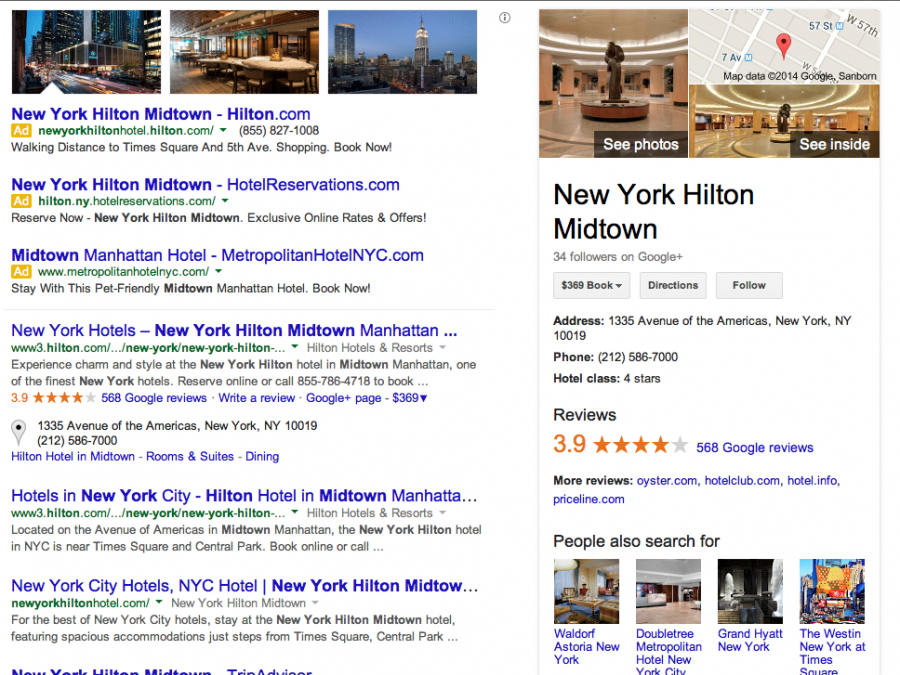Business Innovation
Google takes on the OTAs- Expedia, Booking.com, Travelocity
Google takes on the OTAs and has decided to enter the OTA business directly through a licensing deal with Room 77. Room 77 is a OTA startup that currently has hotel listings located only in the US. Despite the money that is earned by Google from OTAs like Expedia, Booking.com and Travelocity, Google Inc (GOOG) is moving boldly…
Read MoreAdditional Revenue Model for Hotels
Catalin calls this hotel strategy The Catwalk Concept. It is fundamentally an additional revenue model for hotels that uses the concept of sponsoring brands that may be used within the hotel. Excerpt from Catalin at Cain: “A branded hotel can take three specific steps to capitalise on this opportunity: First, conduct research to identify specific brands…
Read MoreYour Guide to Selecting a Hotel Property Management System
When I was young, my grandmother and grandfather owned and ran a small resort in Northern Wisconsin. I remember her notifying the nearby Visitor’s Information Center on Friday evenings when they had open, unsold cottages. It was a friendly conversation that was often repeated just before the cottages ‘turned-over’ for the next weekly rentals. These…
Read MoreStringHub –Where Educators, Students and Startups Meet
Article first published as StringHub –Where Educators, Students and Startups Meet on Technorati. As a guest writer, Technorati published my first article last week, which is shown below. I found it a great compliment to be asked to write for Tehnorati. After all, Technorati, the very first search engine for blogs, is considered the gold standard,…
Read MoreCuckoo for Cacoo, Free Flow Charting for Entrepreneurs
It is always tricky envisioning how the various pieces of a startup business will fit together and interact. Cacoo (https://cacoo.com/) is a cool cloud-based application that can be used for project envisioning, flow charts and mockups. Cacoo offers free and reasonably priced product tiers that will fit into those very tight budgets. For entrepreneurs that…
Read MoreSocial Networks in Turmoil Check Out Your Options!
Did Facebook make you angry this week? Are you afraid of Google becoming the Walmart of the Internet? How dare they change things on what seems like a whim, right? Like Netflix, I think they forgot about the Number One Rule in Social Media. What is that rule, Mr. Zuckerberg? It’s about them, not you!…
Read MoreMake People See Your ‘It’, A 5-Step Approach
Here’s a short story on innovation from Seth Godin that I’d like to share. It brings home what we do and why it matters. The sad, true tale of Otto Rohwedder Otto Rohwedder invented sliced bread. He focused, like most inventers did, on the patent part and the making part. The thing about the invention…
Read MoreVanity Suffixes For Your Domain, Small Businesses Need Not Apply
This week in Singapore, the Internet Corporation for Assigned Names and Numbers (ICANN), which is the Internet body that oversees domain names, voted to open the control of domain suffixes a.k.a. gTLD (generic top-level domains) like .com, .net, .biz, etc. In the past they have allowed a total of only 22 suffixes. Going forward, companies…
Read MoreFive Ways to Poke the Box
I just read Seth Godin’s “Poke the Box” and learned a valuable lesson. It’s okay to fail, actually it’s a good thing. I have to admit, I have been embraced by a “trying to be perfect” mentality from time to time in my life. Maybe even a little bit everyday. As usual Seth helps me…
Read MoreTop Five SXSW 2011 Videos
SXSW 2011 has wound down for this year, but they’ll be back next year and I plan to be there. SXSW has something for everyone, especially in social media or inbound marketing. So many of the heavy hitters are there that it makes ones head spin. It has taken a bit of searching around, but…
Read More



